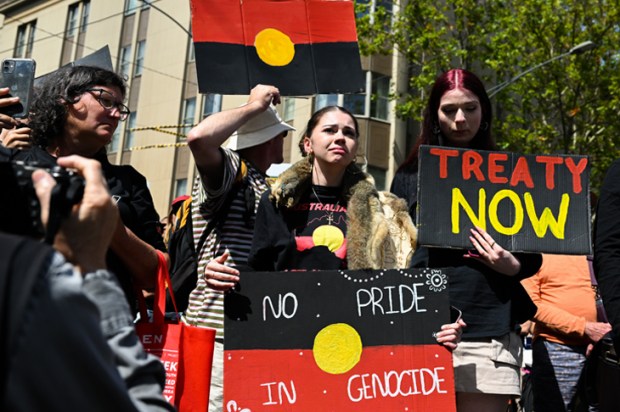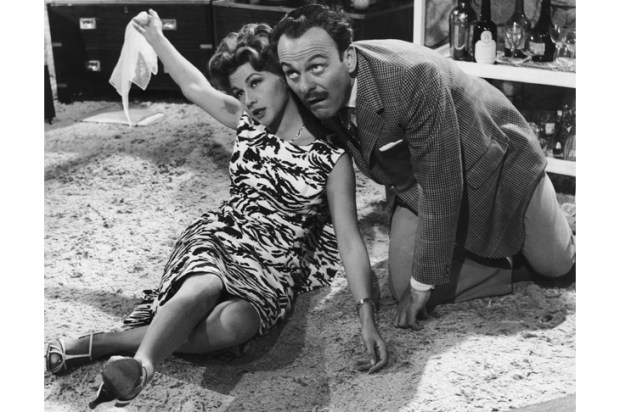As you know, I have always been at the forefront of the fight against discrimination, especially the evil variety that takes the form of harassment by whatever chameleon-like means it uses to hide its vile machinations. For example, when I was Attorney-General, I acceded to the entreaties of the Human Rights Commission and launched some ground breaking work on the definition of the leer. You may not have realised it, but at one stage half the population of Australia spent their time leering at the other half. It turned out, as a result of our pivotal research, that the leerers were, to a man, men; and that the leerees were, to a man, women. Worse still, their leers were locking women in a Svengali-like trance and manipulating them for evil ends too hideous to repeat, but which were all designed to keep women in a servile state of slavery in their kitchens. The leerers also thought they were getting away with it until we turned the spotlight on their work and, if you will excuse the expression, exposed it for what it was. Pivotal to this struggle was our ground breaking work defining just what constituted a leer. We threw ourselves into this work with great enthusiasm, ignoring other time-wasting trifles into which the attorney-general’s department had been diverted; like terrorism, corporate crime, prosecuting tax dodgers and trying to get the High Court to read the Constitution and stop making things up. In our view, defining the leer put these minor pastimes in the shade where they belonged. Unfortunately, we were defeated at the 1983 election and I feared for a while that our research may have been filed away in some dusty, forgotten corner of the department.
It is true that a doctor was caught leering at a patient a few years ago and was suitably chastised by the Human Rights Commission and it emerged that leering was particularly common among the medical profession, especially anaesthetists, but with that exception, the leer seemed to have slipped silently through the cracks of the human rights agenda.
However, I was thrilled the other day, in a macabre sort of way, to find that the leer is alive and well and still worming its evil way through society and that, if anything, there is now a greater and more immediate need for its eradication. Worse still, if anything more hideous than the leer can be contemplated, it has now mutated and become, like the bride of Frankenstein, an even greater evil, namely the Stare. Moreover, the Stare has been joined by its evil cousins, the Disapproving Look and the Unwanted Conversation. Hardened and resilient as they are, these viruses have also moved on from women as too easy a target and have begun to focus their perverted sights on the entire gay and wider LGBTIQ community.
We owe a debt to that renowned seat of learning Latrobe University for this revelation, as it has just concluded research that must rival even my project on the leer for its groundbreaking nature. Dr Bianca Fileborn of that esteemed institution has conducted an exhaustive survey of 292 LGBTIQ members and shown that 65.1 per cent have been stared at, 63 per cent have had comments made to them, 63.3 per cent are the victims of car-horn honking, while wolf whistling accounts for 41.1 per cent and a further 42.5 per cent had been tragically dragged into unwanted conversations! A moment’s reflection on these figures shows that some respondents have been both stared at and subjected to unwanted conversation which is, for them, a double insult. But even if they have been harassed solely by an unwanted conversationalist or a starer, it is clearly being done to denigrate them. It seems, for instance, that a young man was recently stopped in Kings Cross by a complete stranger who threw this cruel barb at him without the slightest provocation: ‘I’d kill for that shirt; where did you buy it?’ Another victim who was selling the Green Left Weekly in Melbourne was shocked to be asked by a passer-by ‘Why don’t you get a job, you deadbeat?’ Still others have been asked ‘Do you know where Flinders Street station is?’ And only last week there was a particularly bad case of staring in Balmain; there was simply no justification for staring at someone simply because she had purple hair, neck tattoos and nose rings and was walking three bulldogs. If you ask me, it is high time a stop was put to this ‘street harassment’, as the Age rightly called it, and Dr Fileborn has done us a national service by exposing it.
Fortunately, she has found an ally in our Prime Minister Malcolm Turnbull. As you know, his predecessor was reluctant to tamper with Section 18C of the Racial Discrimination Act. But Mr Turnbull is a much more go-ahead type of chap who has resolved to stamp out this new social evil of staring and all its handmaidens. As he put it, over-ruling his cabinet who had just decided the opposite: ‘We should not use slogans about this evil, but be agile and nimble in our response and probably innovative and root it out with continuity and change, going forward.’ After a campaign lasting half a day and ignoring the troglodytes and neo-fascist lickspittles on his backbench, he has promised to amend Section 18C so that henceforth it will declare that no-one may offend, insult, humiliate, stare at, make comments about, wolf whistle or honk at anyone else or engage them in unwanted conversation. This is great news. The Greens are also helping by proposing a National Register of Starers. Finally, although I don’t want to be quoted on this, a friend of mine knows a High Court judge who said privately the other day that he (or she) had long thought there was an implied clause in the Constitution that prohibited all of the above activities. Truly, there has never been a better time to be a human rights lawyer.
Got something to add? Join the discussion and comment below.
Get 10 issues for just $10
Subscribe to The Spectator Australia today for the next 10 magazine issues, plus full online access, for just $10.
You might disagree with half of it, but you’ll enjoy reading all of it. Try your first month for free, then just $2 a week for the remainder of your first year.














Comments
Don't miss out
Join the conversation with other Spectator Australia readers. Subscribe to leave a comment.
SUBSCRIBEAlready a subscriber? Log in